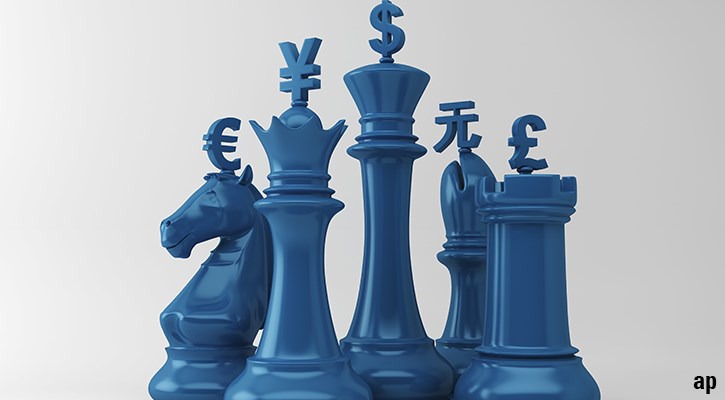
Consumer prices in the eurozone increased by 2.5% in June year on year, down from 2.6% in May, according to Eurostat's flash estimate, but above economists' expectations of a 2.4% rise.
Core inflation, which shows prices without energy and food costs, came in 2.9% over a year earlier, the same level as in May, but higher than the 2.7% rate seen in April.
In June, the greatest contributors to eurozone inflation were services (4.1%, the same rate as in May), followed by food, alcohol and tobacco (2.5%, down from 2.6% in May), non-energy industrial goods (0.7%, stable compared to May) and energy (0.2% vs 0.3% in May), according to Eurostat estimates.
Core Inflation Remains High
"Flash readings for June showed European inflation falling once again, back to 2.5%, down 10 basis points from May’s reading. Although we still expect some volatility in inflation readings, June’s downward move is most welcome, and reaffirms the ECB’s action in cutting rates last month," says Michael Field, European market strategist at Morningstar.
"Core inflation, the measure the European Central Bank is most focused on, remained unchanged in June at 2.9%. The lack of change here month on month would suggest that the downward move in headline inflation was mainly driven by changes in the prices of food and fuel, which we know to be volatile," he added.
European stock markets showed a mixed picture after the inflation data release, with Germany's DAX down 0.9%, and France's CAC40 up 1.1%, a day after the first round of voting in national elections.
Eurozone bond yields didn't move by much after the data release: Germany’s 10-year yield dipped to 2.6% and France's 10-year yield is up marginally to 3.3%, according to MarketWatch.
How Many ECB Rate Cuts Will Follow?
Today's inflation reading is unlikely to change the prediction for two rate cuts from the European Central Bank this year, Michael Field says.
"With the ECB enacting its first rate cut last month, all eyes are on inflation numbers to ascertain how many more rate cuts will follow this year. Current economists’ forecasts are pointing to two."
At the June 6 ECB press conference, ECB president Christine Lagarde said that ECB monetary policy will remain highly data dependent and that she is not committing to “a particular rate path”.
The central bank also revised inflation forecasts at the June 6 meeting; it sees headline inflation averaging 2.5% in 2024, 2.2% in 2025 and 1.9% in 2026.
For core inflation, the ECB predicts an average rate of 2.8% in 2024, 2.2% in 2025 and 2.0% in 2026. And economic growth is expected to pick up to 0.9% in 2024, 1.4% in 2025 and 1.6% in 2026.
The next ECB monetary policy meeting will take place on July 18.



























